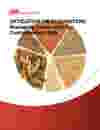MANAGING COMPRESSED AIR CONTAMINATION RISK
High-quality compressed air is essential to food and beverage production. But the wide assortment of compressed air applications can make incidental contact with product or preparation surfaces very difficult to avoid.
Understanding how to select the appropriate compressed air equipment for your operation helps maximize productivity and ensure the utmost reliability and safety of food and beverage products. We’ve created a white paper to help you feel more confident about your production standards.
Fill out this short form and we’ll send you a free copy of our white paper Managing Compressed Air Contamination Risk:


